Administrative Connection to a Fiorano Server (FMQ/FES /FPS) enables performing tasks such as tracking clients connected to the Server, managing destinations and connection factories, snooping messages on a queue or topic, viewing logs and so on.
- To login into a server, select the server node and in the properties view to specify the required connection properties, right-click on the node and select Login.
- After Login, if both the Admin and the JMX connections are successful, then six child nodes are displayed under the Server node.
- If only the Admin connection is successful five nodes, excluding the logger node, will be displayed under the Server node.
- If the JMX Connection is successful, only the Loggers node is displayed as a child of the Server node.
Following is the description and usage of each node under the Server node (including FES/FPS/FMQ).
Clients
All the clients connected to the Server are displayed under this node.
Options Available:
- Refresh: This option refreshes client connections. Client connections made or lost after login are reflected in the tree diagram only when the Clients node is refreshed.
- Purge: This option is used to purge or clear messages on a Topic subscribed to by the client for messages. This action is useful for the durable subscriber when it is in an inactive state.
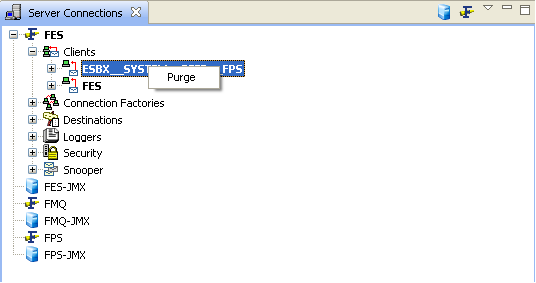
Figure 1: Purge Messages
Connection Factories
The default connection factories provided by the Server are initially displayed under this node.
New Connection Factories can be added by selecting the Add Connection Factory option by right-clicking this node.
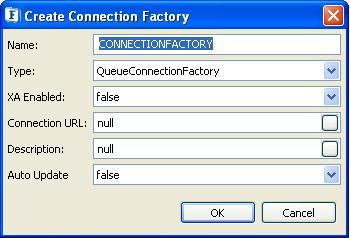
Figure 2: Create connection factory dialog
Right-click on the Connection Factory menu to delete the Connection Factory.
Destinations
The destinations created in the Server are displayed under this node under Queues or Topics categories.
New Queues/Topics can be added by selecting Add > Queue /Topic and right-clicking the Destinations node or by selecting Add Queue/Add Topic on the Queues and Topics nodes.
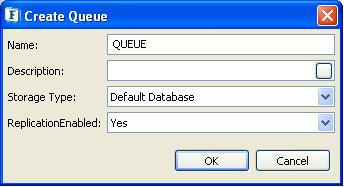
Figure 3: Create Queue dialog
Actions Associated with Queues andTopics
EditACL: This option is used to add Users to the Access Control List (ACL) where Permissions may be edited.
For adding a new ACL Entry, click Add in the EditACL dialog box.
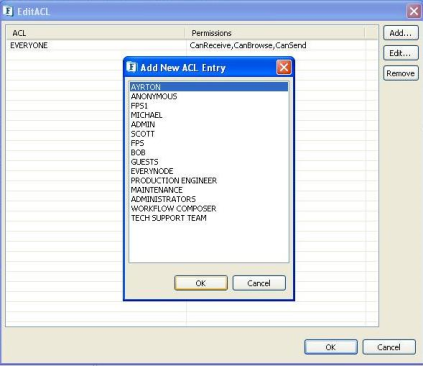
Figure 4: Edit ACL dialog
To edit a new ACL Entry, select the ACL to edit and click on Edit. The Edit Permissions dialog box displayed.
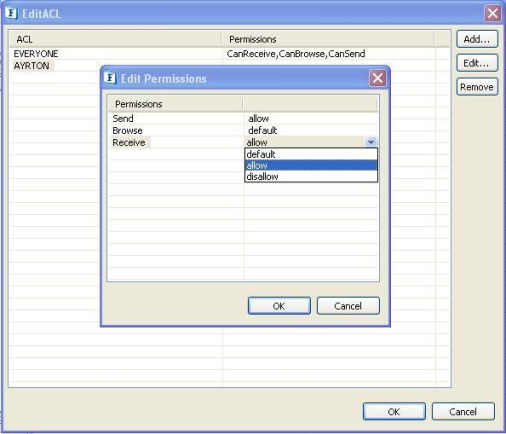
Figure 5: Editing permissions
Subscribe/Receive: This option is used to subscribe or receive messages on a destination. A Subscriber dialog box is displayed, containing subscribed or received messages.
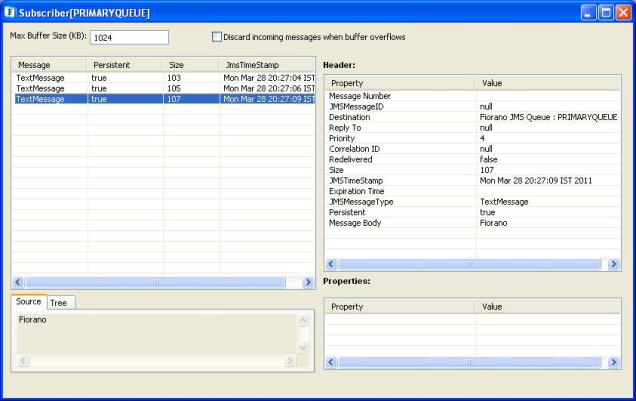
Figure 6: Subscribe messages dialog
Browse Messages: This option is used to view messages on a Queue.
Produce Text Message: This option is used to send/produce messages on a Queue or a Topic.
Delete: This option is used to delete a Queue or a Topic.
Loggers
Users that are logged in are allowed to view and manage Server logs. For example, the node Fiorano, which is a child node, contains all the Fmq and Esb related events to which an Appender or a Console Appender may be added. The same functions may be added to the Monitoring and the WebManagement nodes.
- To add an appender, right-click on the logger and select Add > File or Console Appender. A dialog box is displayed where New File Appender/Console Appender properties can be added .Enter the Values and click on OK to create the Appender.
- To View/Clear Logs of an Appender right-click and select View Logs /Clear Logs.
- To delete an Appender, right-click on the appender and select Delete.
Security
Groups and Users created for access control are added under this node.
- To add a new Group, right-click on Groups and select Add Group.
- To edit the members in a Group, right-click on a Group and select Members. A dialog box is displayed, where new Users or Groups can be added.
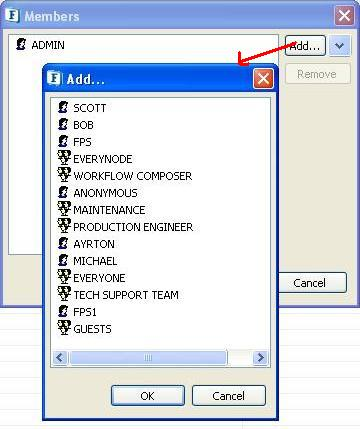
Figure 7: Add members dialog
- To add a new User, right-click on Users and select the Add Users option.
- To change the password of a User, right-click on User and select Change Password. A dialog box is displayed, where the password can be changed.
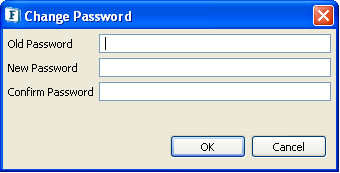
Figure 8: Change password dialog
Snooper
The Snooper function enables the replication of messages under a Queue/Topic to another Queue/Topic.
The Queue/Topic on which snooping is desired can be added by right-clicking on Snooper/Queues/Topics nodes and selecting Add/Remove Destinations option. A dialog box is displayed, where the destination list is displayed. Destinations can be added or removed from this list.
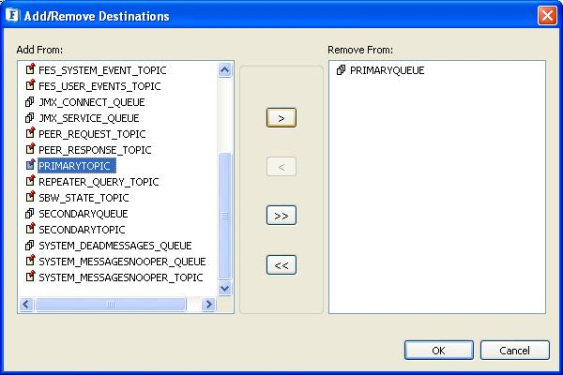
Figure 9: Add/Remove destinations